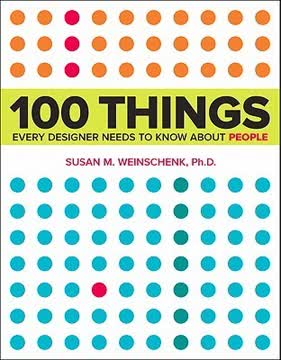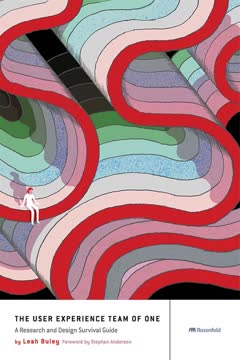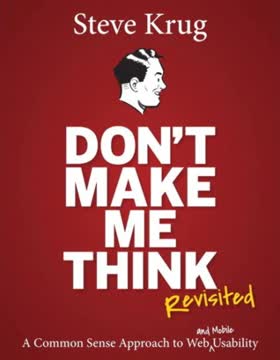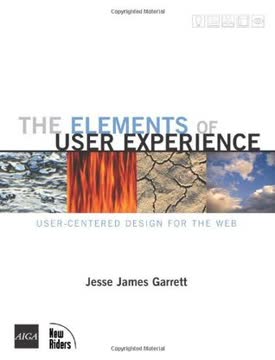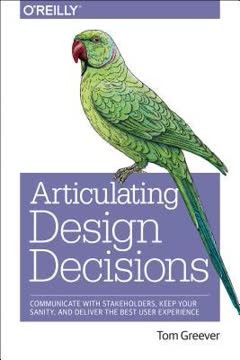重点摘要
1. 研究是批判性思维,而不仅仅是数据收集
研究只是批判性思维的另一种称呼。
研究的本质。 设计中的研究不是为了收集大量数据或证明自己是对的,而是通过系统的探究来增加知识并为决策提供依据。好的研究需要纪律、怀疑精神和挑战假设的意愿。它涉及提出正确的问题,收集相关信息,并对结果进行批判性分析。
关键原则:
- 从明确的目标和研究问题开始
- 准备好根据发现改变你的假设
- 注重见解的质量而非数据的数量
- 让整个团队参与以建立共同的理解
- 利用研究来降低风险并增加决策的信心
2. 在开始任何研究之前定义明确的目标
如果你依赖其他人来设定探究的议程,你可能会陷入模糊的焦点小组和从四十一种蓝色阴影中选择一个阴影的算法之间。
明确的目标驱动有效的研究。 在进行任何研究活动之前,定义你需要知道什么以及为什么是至关重要的。首先确定需要做出的关键决策以及做出这些决策所需的信息。将你的研究问题框定为具体的、可操作的和实用的。
定义研究目标的步骤:
- 确定你要解决的问题或机会
- 确定需要做出的决策
- 列出需要验证的假设
- 根据潜在影响优先考虑研究问题
- 选择适当的研究方法来回答这些问题
记住,目标不是为了研究而研究,而是为了收集能够直接为你的设计和业务决策提供信息的见解。
3. 组织研究对项目成功至关重要
设计不是在深冷的太空真空中进行的。设计发生在人们思绪繁杂的温暖、汗湿的接近中。
理解背景。 组织研究帮助你在设计将要实施的复杂人类环境中导航。通过了解组织的结构、文化和优先事项,你可以预见挑战并使你的工作与业务目标保持一致。
需要调查的关键领域:
- 利益相关者映射:识别关键决策者和影响者
- 工作流程分析:了解当前的流程和痛点
- 资源评估:确定可用的预算、时间和技能
- 文化因素:发现不成文的规则和组织价值观
进行彻底的组织研究有助于你建立盟友,中和潜在的反对意见,并增加你的设计被成功采用和实施的机会。
4. 用户研究建立同理心并为设计决策提供信息
设计、编码、写作就是拥抱危险,勇往直前进入未知领域,用不断变化的材料创造新事物,每天都暴露在批评和失败之中。
同理心驱动创新。 用户研究让你走出自己的视角,真正理解你设计对象的需求、行为和背景。这种深刻的理解对于创造与用户产生共鸣并解决实际问题的解决方案至关重要。
有效的用户研究技术:
- 民族志访谈:在自然环境中了解用户
- 情境调查:观察用户执行相关任务
- 参与式设计:让用户参与设计过程
- 用户旅程映射:可视化用户的体验过程
记住,目标不仅仅是收集数据,而是发展真正的同理心和见解,这将为你的设计过程的各个方面提供信息。
5. 竞争研究识别机会和威胁
最难击败的竞争对手是你潜在客户现在正在使用的那个。
了解你的环境。 竞争研究帮助你理解你的产品或服务在更广泛的市场生态系统中的位置。这不仅仅是关于直接竞争对手,还包括替代解决方案和潜在的颠覆者。
竞争研究的关键组成部分:
- SWOT分析:评估优势、劣势、机会和威胁
- 功能比较:分析你的产品与替代品的对比
- 用户感知:了解客户对不同选项的看法
- 市场趋势:识别新兴技术和变化的用户需求
利用竞争见解来区分你的产品,预见市场变化,并识别未满足的用户需求,这些需求代表了创新的机会。
6. 评估性研究优化和验证设计解决方案
无论你在前期做了多少研究和聪明的设计思考,你都不会一开始就把所有事情都做对,这没关系。
迭代和改进。 评估性研究帮助你在开发过程中测试和优化设计解决方案。这种迭代方法使你能够及早发现可用性问题,验证设计决策,并不断改进用户体验。
关键的评估性研究方法:
- 可用性测试:观察用户与设计的互动
- A/B测试:比较不同版本以优化性能
- 启发式评估:根据既定原则评估设计
- 用户反馈:收集实际用户的定性输入
记住,评估不是一次性事件,而是贯穿设计生命周期的持续过程。准备好根据你学到的东西进行更改。
7. 分析和模型将原始数据转化为可操作的见解
只要你对你的问题和期望有清晰的认识,不要太担心你要进行的研究的分类。
理解数据。 分析是将原始研究数据转化为有意义的见解,从而推动设计决策的过程。这是一个协作过程,涉及识别模式、综合信息和创建代表用户需求和行为的模型。
有用的分析技术和模型:
- 亲和图:对研究发现进行分组和分类
- 人物角色:创建代表关键用户群体的典型用户
- 心理模型:映射用户的思维过程和期望
- 客户旅程地图:可视化端到端的用户体验
分析的目标不仅仅是总结发现,而是生成直接为你的设计策略和决策提供信息的可操作见解。
8. 如果设计和使用不当,调查可能是危险的
调查就是调查。调查不应该是当你不能进行正确类型的研究时的替代品——因为设计一个好的调查并不容易。调查是所有研究方法中最困难的。
谨慎处理。 虽然调查可以提供有价值的定量数据,但它们经常被误用和误解。设计不当的调查可能导致误导性结果和对决策的错误信心。
有效调查的关键考虑因素:
- 明确的目标:定义你需要了解什么以及为什么
- 合适的抽样:确保你的受访者代表你的目标人群
- 精心设计的问题:避免偏见并确保清晰
- 适当的分析:使用正确的统计方法
- 情境解释:将结果与其他研究结合考虑
记住,调查只是研究工具箱中的一种工具。它们在与提供更深入用户动机和行为见解的定性方法结合使用时效果最佳。
9. 分析提供定量数据以优化设计
仅仅因为某些东西是可测量的并不意味着它有意义;跟踪错误的指标可能比不跟踪任何指标更糟糕。
数据驱动的决策。 分析允许你测量实际用户行为并根据现实世界的表现优化你的设计。然而,关键是要关注与业务目标和用户需求一致的有意义的指标。
有效使用分析的关键原则:
- 定义与业务目标一致的明确目标和关键绩效指标(KPI)
- 超越虚荣指标,关注可操作的见解
- 将定量数据与定性研究结合以提供背景
- 使用A/B测试验证设计更改
- 根据性能数据持续监控和调整
记住,分析是一个强大的工具,但它们应该是为了提供信息,而不是取代人类的判断和设计专业知识。始终考虑更广泛的背景和优化努力的潜在意外后果。
最后更新日期:
FAQ
What's "Just Enough Research" about?
- Overview: "Just Enough Research" by Erika Hall is a guide to conducting effective research in design and product development. It emphasizes practical, efficient methods that can be integrated into everyday work.
- Purpose: The book aims to demystify research, making it accessible to non-researchers and helping teams make informed decisions based on evidence rather than assumptions.
- Content Structure: It covers various types of research, including user, competitive, and evaluative research, and provides guidance on analysis, surveys, and analytics.
- Target Audience: The book is intended for designers, developers, and anyone involved in product development who wants to incorporate research into their process without becoming overwhelmed.
Why should I read "Just Enough Research"?
- Practical Guidance: The book offers actionable advice on how to conduct research efficiently, making it ideal for busy professionals who need to integrate research into their workflow.
- Demystifies Research: Erika Hall breaks down complex research concepts into understandable and manageable parts, making it accessible to those without a research background.
- Improves Decision-Making: By focusing on evidence-based decision-making, the book helps teams avoid costly mistakes and assumptions, leading to better product outcomes.
- Encourages Critical Thinking: It fosters a mindset of continuous questioning and learning, which is crucial for innovation and staying competitive in the market.
What are the key takeaways of "Just Enough Research"?
- Research as a Tool: Research is a tool for critical thinking and should be used to inform decisions, not just validate preconceived ideas.
- Types of Research: The book outlines different types of research, such as user, competitive, and evaluative, and when to use each.
- Collaboration is Key: Effective research requires collaboration and shared understanding among team members to ensure insights are applied effectively.
- Bias Awareness: Recognizing and mitigating biases in research is crucial for obtaining accurate and useful insights.
How does Erika Hall define research in "Just Enough Research"?
- Systematic Inquiry: Research is defined as systematic inquiry aimed at increasing knowledge about a particular topic.
- Types of Research: It includes pure research for new knowledge, applied research for real-world goals, and design research focused on user-centered design.
- Purpose of Design Research: Design research is about understanding the people for whom products are designed, focusing on their behaviors, needs, and contexts.
- Critical Thinking: Research is equated with critical thinking, emphasizing the importance of asking the right questions and seeking evidence-based answers.
What is the process of conducting research according to "Just Enough Research"?
- Define the Problem: Start with a clear problem statement that describes the topic and goal of the research.
- Select the Approach: Choose the appropriate type of research based on the problem statement and available resources.
- Plan and Prepare: Develop a research plan, including roles, recruitment, and materials needed for data collection.
- Collect and Analyze Data: Gather data through interviews, observations, or testing, and analyze it to identify patterns and insights.
How does "Just Enough Research" address common objections to research?
- Time and Money Concerns: The book argues that research saves time and money in the long run by preventing costly mistakes and rework.
- Lack of Expertise: It emphasizes that anyone can conduct research with the right mindset and tools, and provides guidance to develop necessary skills.
- Fear of Being Wrong: Encourages embracing being proven wrong as a learning opportunity, which leads to better decision-making.
- Infrastructure Needs: Suggests using existing tools and processes for research, highlighting that special infrastructure is not necessary.
What is the role of collaboration in research according to "Just Enough Research"?
- Shared Understanding: Collaboration ensures that insights are shared and understood by all team members, leading to more effective application.
- Roles and Responsibilities: Clearly defined roles and responsibilities within the research process help maintain focus and quality.
- Healthy Conflict: Encourages healthy conflict and questioning within teams to strengthen design decisions and avoid groupthink.
- Continuous Learning: Collaboration fosters a culture of continuous learning and questioning, which is essential for innovation.
How does "Just Enough Research" suggest handling biases in research?
- Acknowledge Bias: Recognize that bias is inherent in research and take steps to identify and mitigate it.
- Design Bias: Be aware of how personal goals or preferences can influence the design of studies and the interpretation of data.
- Sampling Bias: Ensure that research participants are representative of the target audience to avoid skewed results.
- Social Desirability Bias: Encourage honesty and confidentiality to reduce the influence of participants wanting to present themselves favorably.
What are the best quotes from "Just Enough Research" and what do they mean?
- "Make friends with reality": This quote emphasizes the importance of understanding the real-world context and constraints when conducting research and designing products.
- "Research is just another name for critical thinking": Highlights that research is about asking the right questions and seeking evidence-based answers, not just gathering data.
- "Questions are more powerful than answers": Encourages a mindset of continuous inquiry and learning, which is crucial for innovation and effective problem-solving.
- "The right questions keep you honest": Stresses the importance of questioning assumptions and seeking evidence to guide decision-making and avoid costly mistakes.
How does "Just Enough Research" differentiate between qualitative and quantitative research?
- Qualitative Research: Focuses on understanding behaviors, needs, and motivations through methods like interviews and observations. It provides rich, detailed insights.
- Quantitative Research: Involves measuring and analyzing numerical data to identify patterns and trends. It is useful for validating hypotheses and making generalizations.
- Complementary Methods: The book suggests using both methods together to gain a comprehensive understanding of user needs and behaviors.
- Bias and Limitations: Highlights the potential biases and limitations of each method and the importance of choosing the right approach for the research question.
What is the significance of user research in "Just Enough Research"?
- Understanding Users: User research helps designers understand the true needs, priorities, and contexts of their target audience.
- Empathy Development: It fosters empathy by allowing designers to see the world from the user's perspective, leading to more user-centered designs.
- Informed Decision-Making: Provides evidence-based insights that guide design decisions and reduce the risk of assumptions leading to poor outcomes.
- Continuous Improvement: Encourages ongoing user research to adapt to changing user needs and improve products over time.
How does "Just Enough Research" suggest using surveys effectively?
- Clear Objectives: Start with a clear research objective and ensure that the survey questions align with this goal.
- Question Design: Write simple, specific questions that are easy for respondents to understand and answer truthfully.
- Sampling Considerations: Be mindful of sampling bias and ensure that the survey sample is representative of the target population.
- Data Analysis: Analyze survey data carefully, considering potential biases and limitations, to draw meaningful conclusions.
评论
《Just Enough Research》获得了大多数正面评价,因其对用户体验研究方法的简明而全面的覆盖而备受赞誉。读者们欣赏其易于理解、实用的建议和引人入胜的写作风格。许多人认为它对初学者和有经验的专业人士作为快速参考都很有价值。一些人批评它过于基础或在某些方面缺乏深度。总体而言,它被推荐给那些希望理解或改进其用户研究方法的人,特别是其关于组织和竞争研究的部分备受好评。
A Book Apart Series Series
Similar Books
